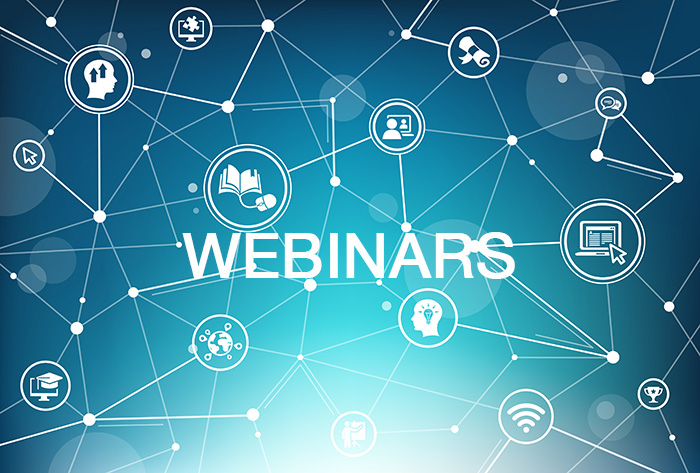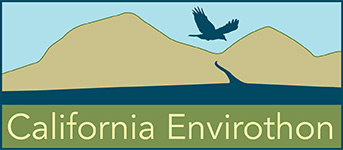Webinars

2024 Webinars
February 8, Thursday, 4 – 5 pm The Basics of Soil and Renewable Energy
Presenters
-
Olivia Peters, Soil Health Specialist, Natural Resources Conservation Service (NRCS-USDA), Area 3 (Fresno)
-
Rachel MacDowell, Soil Health Specialist, NRCS, Area 1 (Oroville)
Zoom Link: https://us02web.zoom.us/j/84355014859?pwd=NkVmOG1aWkU2bnYyLzBkSmZtd3BlUT09
Synopsis
-
Interdisciplinary nature of soil science/inherent and dynamic soil properties
-
Soil mineral composition and nutrient storage
-
Soil types for different land uses
-
Organic matter and carbon cycle/sequestration
-
Soil Classification
-
Climate change and soil health – Review from last year
-
Research articles, case studies, and current events
Study links
-
Soil Health | Center for Agriculture, Food, and the Environment (umass.edu)
-
Soils & Plant Nutrients | NC State Extension Publications (ncsu.edu)
-
Greenhouse Gases and Carbon Storage | U.S. Geological Survey (usgs.gov)
-
Climate Change: Atmospheric Carbon Dioxide | NOAA Climate.gov
February 17, Saturday, 10:30 – 11:30 am Wildlife and Renewable Energy Development in the Desert
Presenter: Jeffrey E. Lovich, PhD, FLS, Research Ecologist, U.S. Geological Survey, Southwest Biological Science Center, Flagstaff, AZ
Zoom Link: https://us02web.zoom.us/j/87470193147?pwd=S2RLa2pONWEzUEtUM25hU3d2bnoxUT09
Synopsis
Dr. Lovich will present his research on both wind and solar energy on wildlife with an emphasis on terrestrial non-avian species. He will summarize the state of scientific knowledge of the effects (positive, neutral, and negative) of renewable energy development on wildlife with attention on the desert tortoise ecology in an operating wind farm. Potential effects of solar and wind energy development include, but are not limited to, direct mortality: destruction and modification of habitat, including impacts of roads, habitat fragmentation, and barriers to gene flow.
Study links:
https://www.usgs.gov/staff-profiles/jeffrey-e-lovich
https://www.usgs.gov/centers/southwest-biological-science-center/science/gemini-solar-project
https://caenvirothon.com/wp-content/uploads/2024/02/Solar-energy-critical-ecological-concepts.pdf
https://caenvirothon.com/wp-content/uploads/2024/02/bio-science.2011.61.12.8.pdf
https://caenvirothon.com/wp-content/uploads/2024/02/Agha_2020_Environ._Res._Lett._15_075004.pdf
Contour Map
March 5, Tuesday, 4:00 – 5:30 pm Forestry and Renewable Energy
Presenters
-
Jason Butcher, Wood Products and Bioenergy Program, CAL FIRE
-
Sutton Guldner, Head of Business Development, Arbor Energy
-
Farrah Powell, Senior Program Manager, Arbor Energy
Zoom Link: https://us02web.zoom.us/j/84021149070?pwd=cysvbzhMMjV4RnpEV2RaekExWDlDdz09
Synopsis
Students will learn about forest management considerations for renewable energy production, the economics of forest-based renewable energy, technology used to create forest-based renewable energy, funding mechanisms for implementing forest-based renewable energy, and education pathways for students interested in this topic.
Study links (note: more may be added)
-
Frontiers | An Overview on the Conversion of Forest Biomass into Bioenergy (frontiersin.org)
-
Forests: Carbon sequestration, biomass energy, or both? | Science Advances
-
Biomass explained – U.S. Energy Information Administration (EIA)
-
Biomass – Energy Kids: U.S. Energy Information Administration (EIA)
March 13, Wednesday 4-5pm California Offshore Wind Energy
Synopsis: Offshore wind is an important part of the solution to meet California’s clean energy goals, but has potential negative impacts on the marine environment, especially to our incredible bird life. This presentation will briefly describe the offshore wind turbine technology planned for California, the California Coastal Commission’s regulatory authority, the bird life found in the planned wind energy areas, and how to mitigate the worst impacts to birds. We’ll look at real case studies in other parts of the world as well as modeled risk assessments to better plan for seabird-safer offshore wind in California.
Presenters’ official titles:
Holly Wyer – California Coastal Commission – Senior Environmental Scientist
Whitney Grover – Golden Gate Bird Alliance – Deputy Director
Join Zoom Meeting:
https://us02web.zoom.us/j/84043525737?pwd=YmI3Rnk2eXViRVY1cHVFK2NRdGQ4QT09
Meeting ID: 840 4352 5737
Passcode: 531404
Study Links:
Please review the follow study materials prior to the webinar
- Press Release: Yurok Tribe Teams Up with Cal Poly and CR To Train Offshore Wind Workforce
- Old Lumber Port Preps for New Life as California Offshore Wind Hub
- ‘A massive enterprise’: California’s offshore wind farms are on a fast track
- There’s nothing clean about offshore wind development unless California tribes are involved
- U.S. Department of Energy, WINDExchange
- California Offshore Wind: Winding Up for Economic Growth & Environmental Equity
- NOAA Fisheries
Additional optional study links for further reading:
- New CA la aims to speed up offshore wind development
- A ‘Eureka Moment for Offshore Wind
- American Geosciences Institute
- Bureau of Ocean Energy Management (BOEM)
- BOEM – California Activities
- National Renewable Energy Laboratory
- Establishing baselines for predicting change in ambient sound metrics, marine mammal, and vessel occurrence within a US offshore wind energy area
Topic: Opportunities and Challenges for Pollinator Habitat on Solar Farms
Study Links:
Who Are the Pollinators? | Xerces Society
What is Pollination? | US Forest Service (usda.gov)
Buzzing Around Solar: Pollinator Habitat Under Solar Arrays | Department of Energy
Topic: Klamath Dam Removal: Regulatory History and Tribal Perspectives
Time: April 2 @ 4:00 – 5:30 pm
Synopsis: The removal of four hydroelectric dams from the Klamath River dam is one of the largest dam removals in history of the United States, This webinar will focus on part of the history, the issues resulting from the and the regulatory process of the dam removal. The webinar will also present Tribal perspectives on bridging the gaps between traditional ecological knowledge and contemporary science as it relates to the dam removal.
Speakers
Sue Keydel is a scientist who worked for the U.S. Environmental Protection Agency’s Water Division as a watershed restoration coordinator for over 20 years. For over a decade she was actively involved in the regulatory process of the Klamath dam removal project.
Keith Parker is a Senior Fisheries Biologist for the Yurok Tribe of California and an enrolled Tribal member. He co-stewards harvest management of fish on the lower 44-miles of the Klamath River and conducts genetic analysis of returning Trinity River Hatchery salmon in collaboration with UC Santa Cruz. Keith also chairs two graduate student committees at UC San Diego – SCRIPPS Institution of Oceanography and is a lecturer at Cal Poly Humboldt, teaching ESM 105 (Natural Resource Conservation).
Study links – (55 minutes total)
- Video – Inside the fight behind one of the largest-ever dam removals – Washington Post – 6 minutes https://www.youtube.com/watch?v=sy6zzFZCi0s
- Video & article – Multiple viewpoints and issues related to the Dam removal – Klamath dams are coming out | Dam removal project on the Klamath River | Oregon Field Guide – Oregon Public Broadcasting – 11 minutes – https://www.opb.org/article/2023/10/06/massive-dam-removal-project-spurs-hope-in-the-klamath-basin/
- Audio and Article – After a century of displacement, Shasta Indian Nation sees hope in dam removal – Oregon Public Broadcasting (4.5 minutes) – https://www.opb.org/article/2023/10/15/klamath-oregon-dam-removal-shasta-indian-nation-native-american-indigenous-culture/
- Video – ABC News – World’s biggest dam removal project changing a California river – multiple viewpoints (14 minutes) – https://youtu.be/VOh705rE_6w?si=VONbbk_M3k449emQ
- Video – KGW News – Crews begin reservoir drawdown on Klamath River dam removal project (2 minutes) – https://www.youtube.com/watch?v=vdFVu4DgDaI
- Video & article – As Klamath River dams come down, old lands emerge and the landscape begins to heal (overview of drawdown impacts) – AZ Central (2 minutes) https://www.azcentral.com/story/news/local/arizona/2024/02/16/klamath-river-undergoes-heart-surgery-as-dams-come-down/72497464007/
- Video – Swiftwater Films – timelapse of deconstruction of Copco 2 dam – Fall 2023 (3 minutes) https://www.youtube.com/watch?v=BWkzUEFTCms&pp=ygUWc2hhbmUgYW5kZXJzb24ga2xhbWF0aA%3D%3D
- Copco Lake after drawdown – Klamath River Dam Removal (drone footage 2/2/24) – (3 mins) https://www.youtube.com/watch?v=GPf3o5Oq5X8
Additional Resources:
- Water Education Foundation –
- summary of Basin issues https://www.watereducation.org/aquapedia/klamath-river-basin
- Klamath River Basin Chronology – https://www.watereducation.org/aquapedia/klamath-river-basin-chronology
- OSU Podcast – What it takes to take down a dam – 10 episodes- https://agsci-labs.oregonstate.edu/klamath/what-it-takes-to-take-down-a-dam/
- Why did we do this? – Desiree Tullos/Prof. Water Resources Engineering, OSU
- I’m not doing this for myself. I’m doing this for my kids. – Barry McCovey Jr., Yurok Tribal member and director of the Fisheries Program for the Tribe on management, restoration, and science around fisheries on the river
- The Healing Process has begun. – Mark Bransom, CEO of the Klamath River Renewal Corporation, shares lots of fascinating details about the timeline, logistics, etc.
- Getting to the dam removal decision. – Bob Gravely / PacifiCorp explains how the private electric utility reached the decision that removing their four dams on the Klamath River was in the best interest of ratepayers.
- How Gwen sleeps at night: Communication, expertise, and partnering in the project of a career. – Gwen Santos with Resource Environmental Solutions (RES) walks us through how
the many contractors are orchestrating such a large project, and why constant communication and the right expertise are essential. She explains some of the vast scale of site restoration, a large and often underappreciated aspect of all dam. - The fish will figure it out. – Dr. Tommy Williams from NOAA’s Southwest Fisheries Science Center. Tommy provides a clear overview of why the dam removal is so important for the Klamath River fish as the system faces climate change and other threats
- Lessons in adaptive environmental permitting. – Chris Stine with ODEQ walks us through how the states (CA and OR) worked the permitting process to support the projects,
setting an important precedence for how environmental permitting can adapt
along with the environment - There will be mud! – Chauncey Anderson, recently retired from the US Geological Survey, helps unpack what we think we know about the water quality changes ahead for the Klamath, what could happen with all of that sediment (13 million cubic yards) stored behind the dams, and how the temperature, nutrients, and algae in the river could change.
- A lot to celebrate: White water guides talk Klamath dams and dam removal. – guides
from Indigo Creek Outfitters discuss the “Upper Klamath” (bleow JC Boyle dam) with legendary rapids with big waves and exciting drops. With the dams gone, flows will be much more variable and less predictable, eliminating the reach as a reliable option for guiding
businesses – a loss for recreational users of the river, but also creating new opportunities. - It feels like we have no control – Two local landowners at Copco Lake, share their perspectives on the impacts of the dam removals on local residents, as well as the threats facing rural communities in the American West more broadly
- PacifiCorp’s Klamath webpage – https://www.pacificorp.com/energy/hydro/klamath-river.html
- Klamath River Renewal Corp (KRRC) – https://klamathrenewal.org/
- Klamath Dam Removal Overview Report for the Secretary of the Interior. An Assessment of Scientific and Technical Information. March 2013 – https://klamathrenewal.org/wp-content/uploads/2020/07/A7-Full-SDOR-accessible-022216.pdf
- Klamath Basin Monitoring Program – facilitates the coordination and implementation of water quality monitoring in support of the stewardship, protection, and restoration of all beneficial uses within the Klamath River watershed, with the goal of restoring water quality.
- Home page has recent articles, reports etc – great info source!
- ID’s: partners, WQ monitoring, real-time Cyanobacteria blooms (BGA Tracker) and fish health data,
- Meetings, Presentation’s, and important documents- excellent overview to the many players needed to steward a watershed. – https://kbmp.net/documents/meeting-minutes
- Scott River Watershed Feb 2024 meeting (tour and watershed management/restoration
Study Links:
- Renewable Energy Types and Their Impact on Soil Health (forestnation.com)
- The role of soils in provision of energy | Philosophical Transactions of the Royal Society B: Biological Sciences (royalsocietypublishing.org)
- Pairing Regenerative Farming and Solar Energy Production to Improve Urban Resilience – Foundation for Food & Agriculture Research (foundationfar.org)
Please visit California Envirothon’s YouTube Channel
